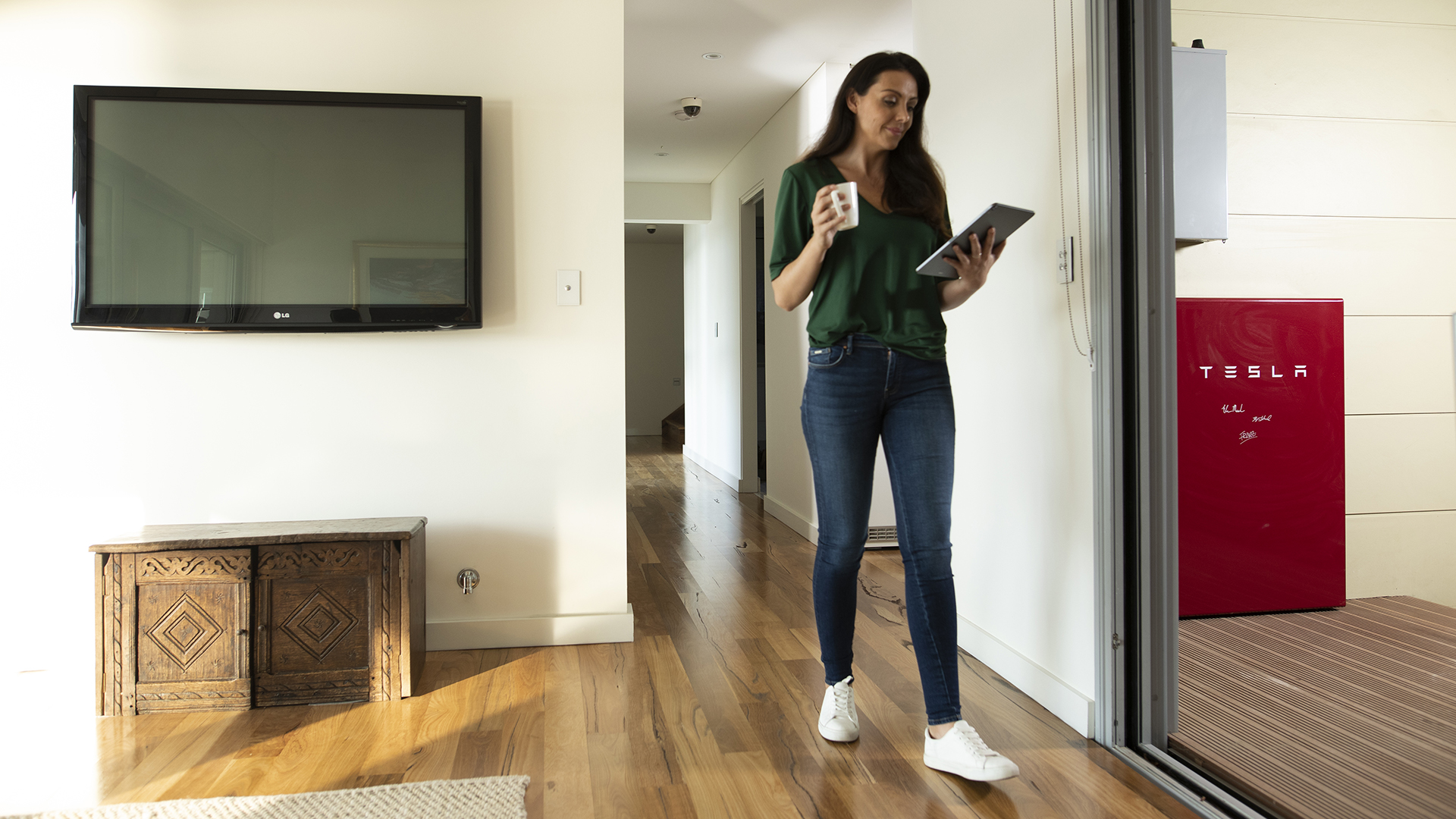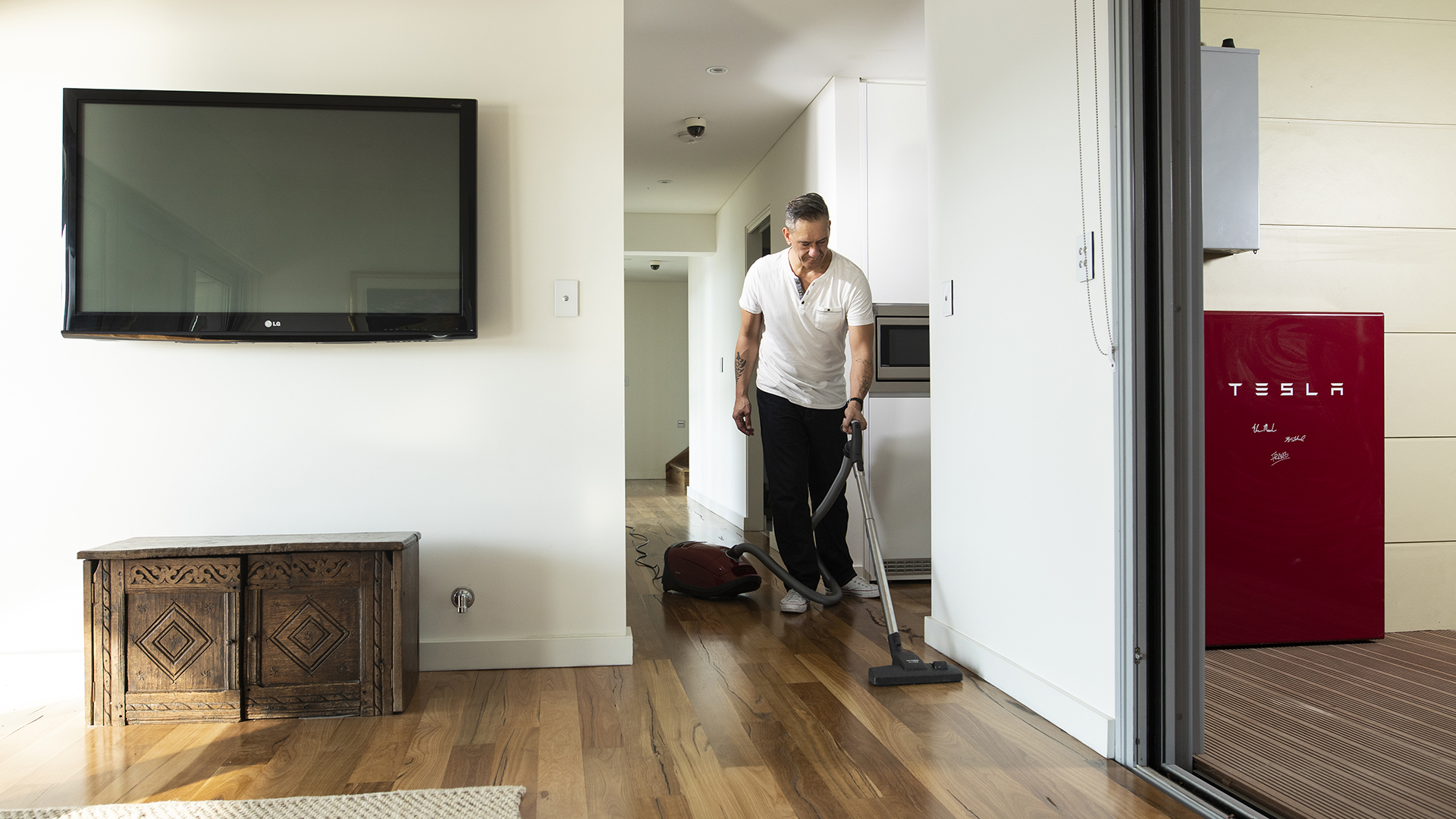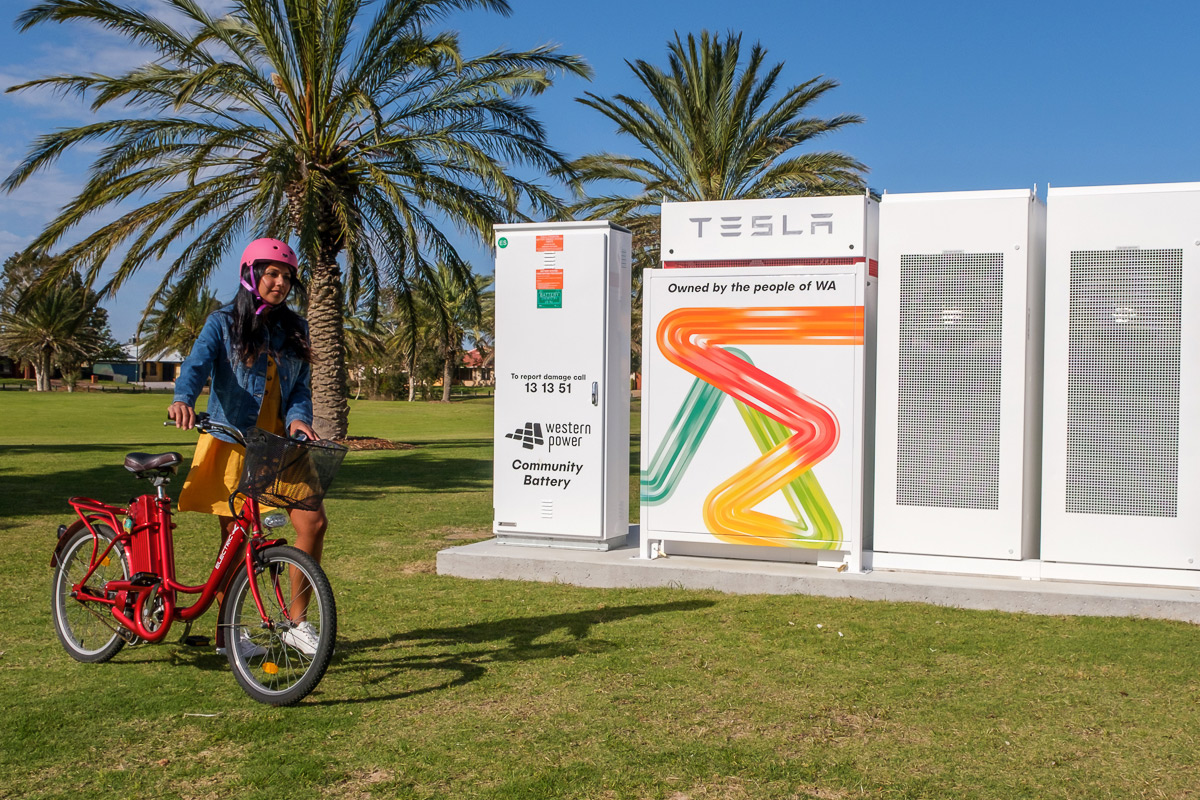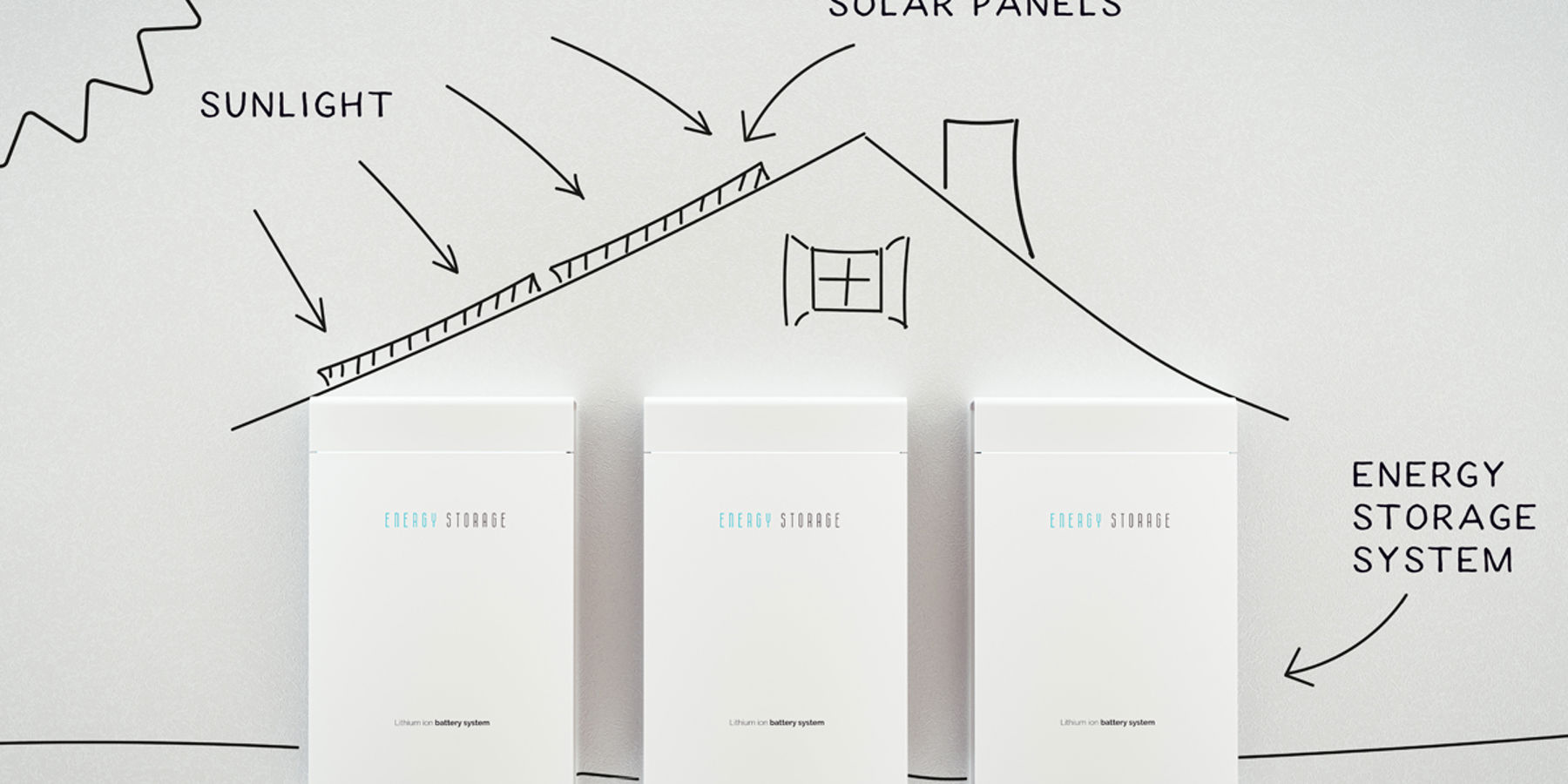
Ever considered buying a solar battery for your home? If you have a solar energy system, the idea of storing your excess power for later use has probably crossed your mind more than once.
Buying battery storage is a big investment and there’s lots to learn. Here’s some helpful things to know before you buy.
1. What types of in-home batteries can you get?
Home-scale battery energy storage systems come in all shapes and sizes, with different chemical compositions and capacities. The most common options for household energy storage are lithium ion and lead acid batteries. Newer battery technology also includes flow batteries and sodium nickel chloride batteries.
A battery storage system connects to a house via electrical wiring through an inverter. An inverter changes or ‘inverts’ the solar energy produced by your solar panels (DC electricity) into energy that can be used by your household appliances (AC electricity, which is the same as the electricity that comes from the grid). Some batteries are a one box solution and have their own inverters, others need two boxes – a battery box and an inverter box.
If you’ve heard of an AC-coupled storage system before, this means the battery has its own inverter connected to the grid, as does the solar panels. This option is ideal for households who want to add a battery to an existing solar system.
A DC-coupled solution shares the same inverter with the solar panels. A homeowner buying a new solar system and battery at the same time will generally go for this option.

2. How big should my battery be?
Solar battery storage isn’t a one-size-fits-all solution. Your budget, where you live, type of solar panel system, how you use your power and how you intend to use your battery, all play a part.
It’s important to get a rooftop solar system and battery that matches your needs and energy use – bigger isn’t always better. Just like you should match the number of solar panels to your household’s energy use, so should you match your battery storage capacity.
Ideally, having a detailed look at your energy use and when you use energy will help. Some homeowners install an energy monitoring system that looks at energy use (load) and your solar system’s panel output to help determine the correct solar system size for you.
Battery sizes are expressed as kilowatt-hours (kWh) and the average Aussie home uses roughly 16kWh of electricity per day. Most home batteries range from three to 12 kilowatt-hours (kWh) in size and an accredited battery installer can help determine the most suitable size based on your needs and location.
3. Why do I need to let Western Power know I have a battery?
Battery systems have inverters that connect to the grid, as such they need to comply with strict connection requirements.
We need to make sure your proposed battery system will interact correctly and safely with your home’s solar system, your grid connection, and the grid in your area.
4. Why can’t I install the battery myself?
The installation of a battery needs to be done by a licensed electrician who is also an accredited battery installer.
This is because the battery connects to your home’s electrical system so it needs to be done correctly and in compliance with Australian standards for batteries, electrical wiring, and inverter systems, which ensure safe installation on a property.

5. Where can a solar battery be installed?
The Australian battery standards require at least 600mm (either side) and 900mm (above) between your battery and any windows, doors and appliances. This includes hot water systems and air conditioning units.
Batteries can be wall mounted or floor standing.
The coolest wall in your garage is often the best spot to install a home battery storage system. A battery can’t be installed in ‘habitable’ rooms such as bedrooms, kitchens, family rooms and living rooms. Your laundry or hallway may be suitable, so long as it is placed on a non-combustible wall.
Where you install your battery also depends on the battery type. For example, lead acid batteries are best installed outdoors for safety reasons.
6. When there is a power outage, can I run everything off the battery?
Not all battery storage systems provide backup power during an outage.
If your battery is charged, it may be able to supply limited power to your home. How much power will vary depending on the size and type of system you own.
In its most economical form, the latest solar batteries on the market aren’t designed to provide power during a power outage.
7. What’s the average lifespan of a home battery storage system?
This depends on the type of solar battery you buy, as each have different life cycles.
Lithium-ion batteries are said to last the longest if maintained correctly, but they also tend to be the most expensive. More cycles per day will decrease the life span of the battery so it is important to correctly size the system for your energy usage.
Over time, the battery’s ability to store energy will slowly reduce with use. But to ensure optimal performance and longevity, your battery will require maintenance, similar to how a car needs regular servicing. The type of maintenance and frequency will be dependent on the battery system you select.
8. Is it possible to go completely off-the-grid with a home battery?
Having a solar and battery system doesn’t mean you’re off-the-grid.
An off-grid system requires a backup power source for times of high energy usage – that would mean enough power to run your house overnight and into the morning and during bad weather.
Off-grid systems are more complex to design and install. Setting up a solar and battery storage system that large enough could cost upwards of $80,000.
What if I don’t get my own in-home battery, what is the alternative?
A community battery is a storage solution that stores excess solar energy flowing into the grid from rooftop solar. They smooth power flows, support grid stability and allow for further uptake of rooftop solar.
Some community batteries also have individual energy storage.
Together with Synergy, we’ve been trialling the community battery product known as a PowerBank, which allows customers to bank their excess solar energy in a shared battery and draw it out again when needed. This is an alternative option to buying your own battery and more PowerBanks or similar products are expected to be rolled-out in the near future.
Find out more about our community batteries and PowerBanks.

More information
